JOE KNOWS! Cation Exchange Capacity - What Is CEC and How Does It Impact Soil Fertility?
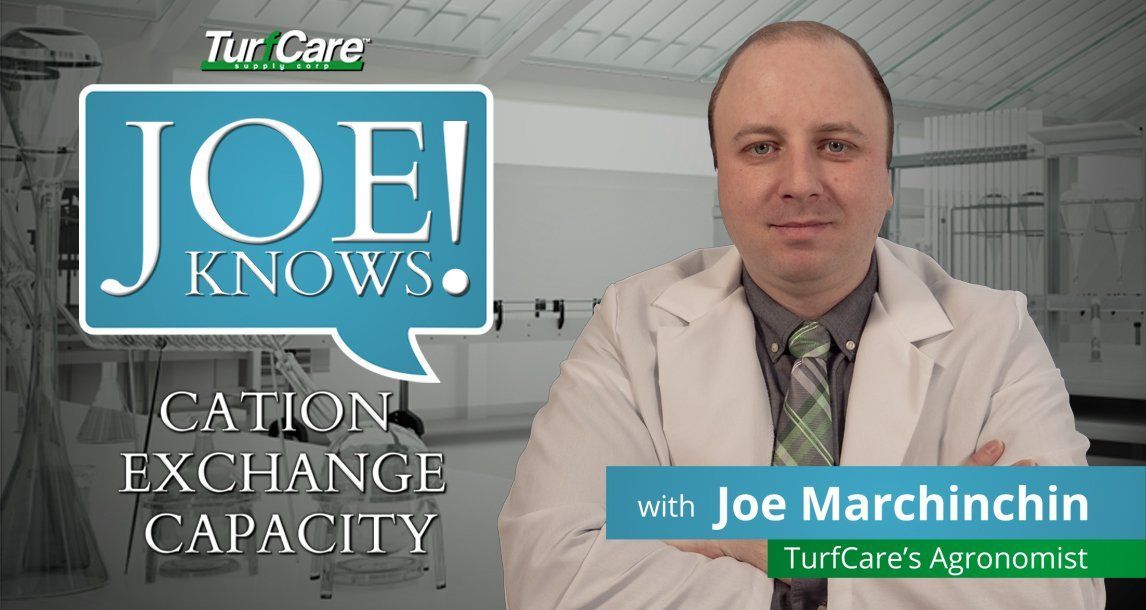
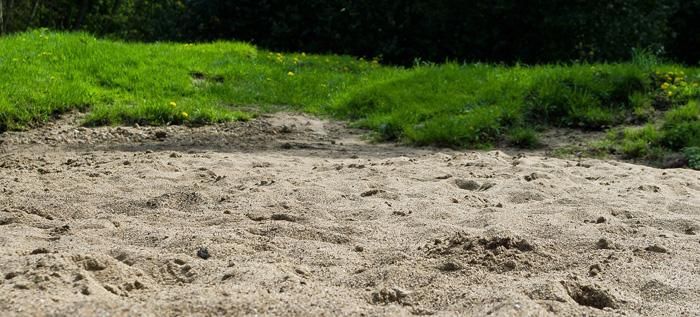
CEC 4 – It’s no secret that turfgrass doesn’t grow well in sand. Why is this? What characteristics of sand make plant growth difficult? What effect does sand have on CEC?
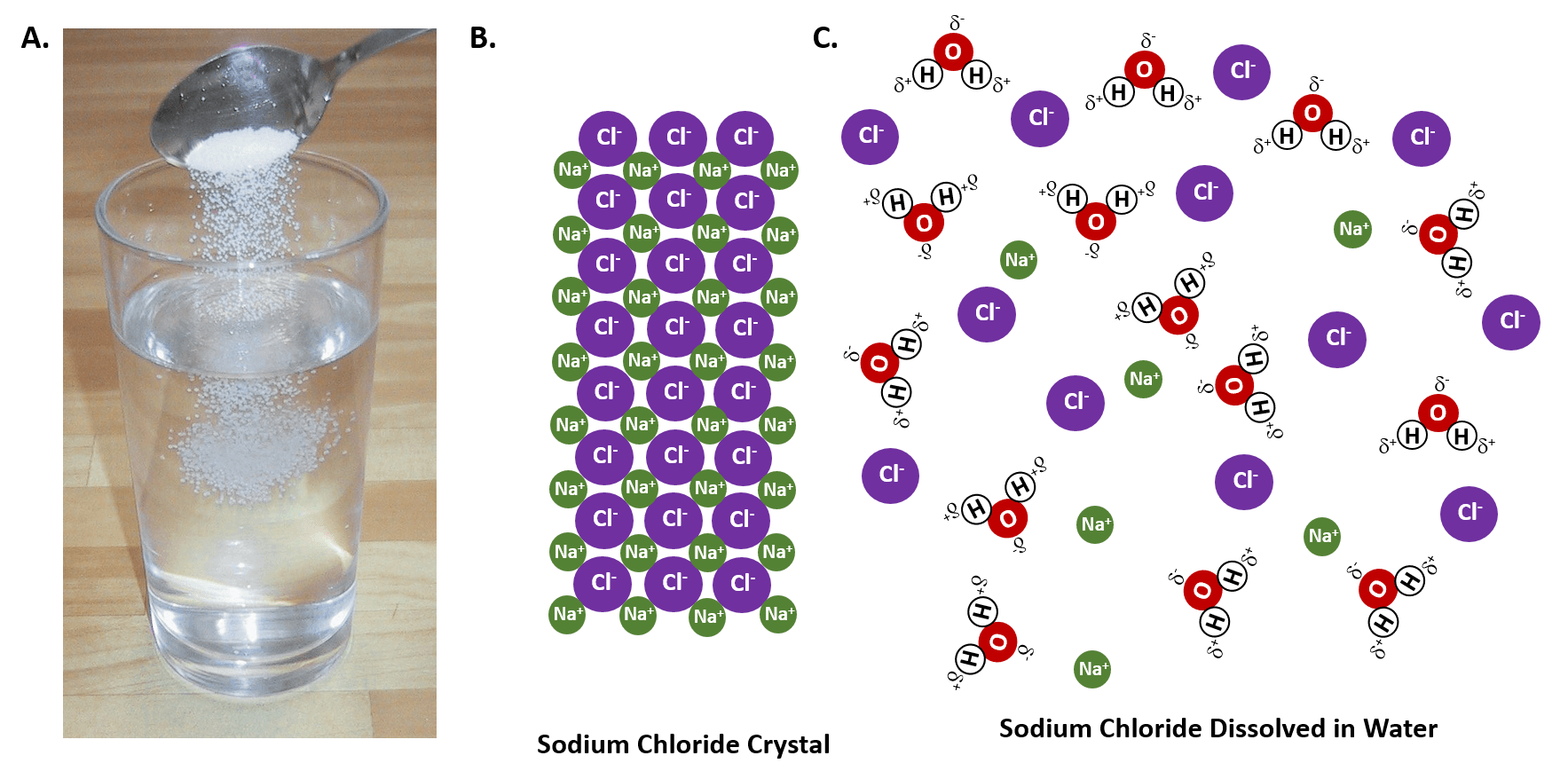
CEC 5 – The diagram above shows how sodium and chlorine ions (NaCl, table salt) are normally bound together tightly into a crystal, however when water is added, the Na+1 and Cl-1 ions split apart. A similar reaction takes place in the soil with macro and micronutrient raw ingredients in the presence of water. Once ionic compounds split apart into ions with positive and negative charges, they can find soil particles and ‘stick’ to them while maintaining their ion forms.
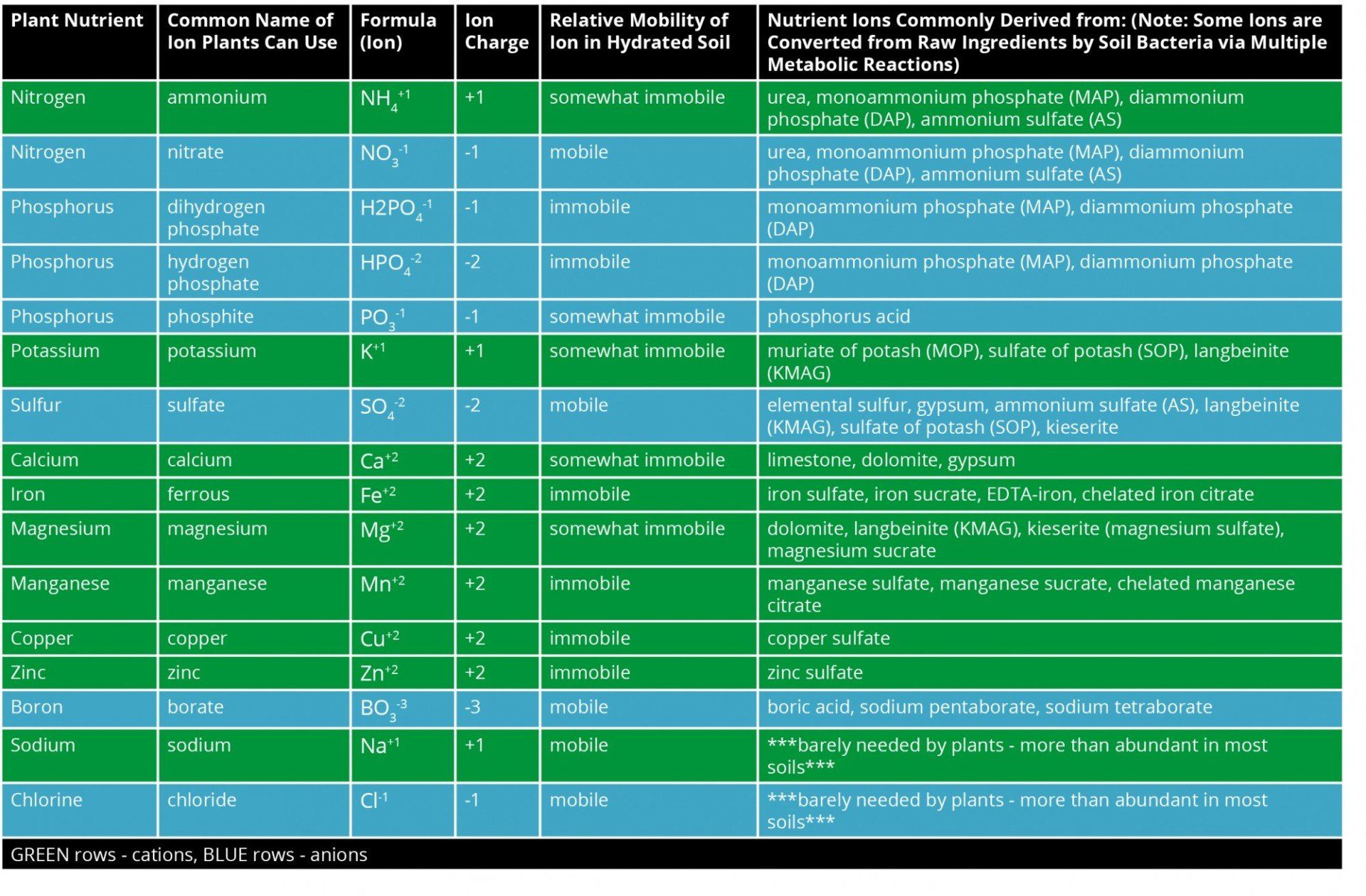
Chart 1- The chart above shows a listing of the most common macro and micro nutrients and associated nutrient ions forms that exist in the soil (that plants can actually absorb). The presence of all cations in the soil (even ones not listed in this chart) can be used to help determine the total CEC value of a soil. Also note that many ions have a negative charge (-1, -2 or -3). These ‘anion’ nutrients cannot be detected using a cation exchange capacity test. Instead, one would have to perform an ‘anion exchange capacity’ test (AEC), which most laboratories do not perform (this is because most macro and micronutrient ions are cations).
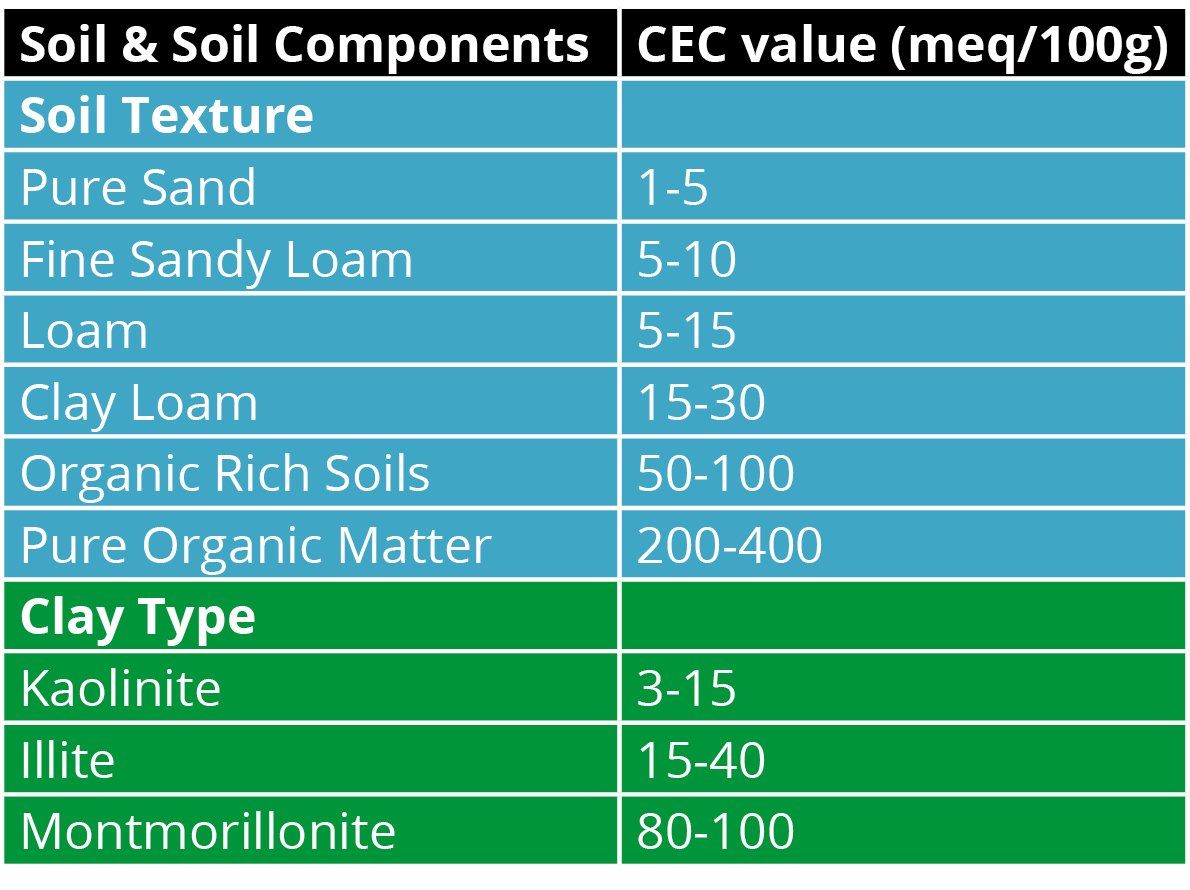
Chart 2 - The chart above shows the typical range of CEC values for various soil types under neutral pH.
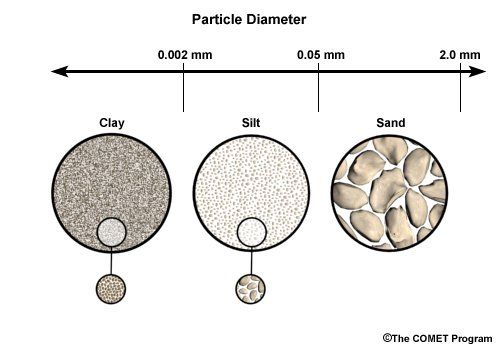
CEC1 – (above) – Remember, nutrients exist in the soil as cations and anions. Some soils do a much better job retaining nutrient cations than others. In general, clay can hold more cation nutrients per unit area than a sandy loam.
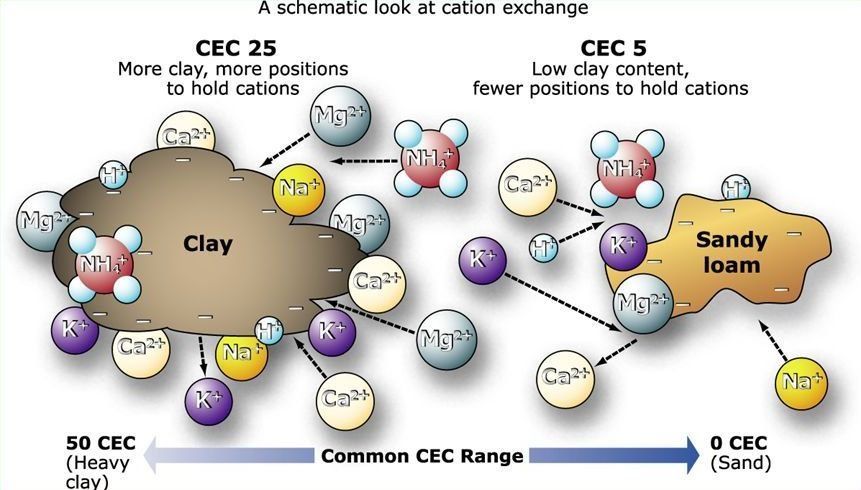
CEC 3 - (above) - Smaller soil particles (such as clay) generally adsorb more cation nutrients than larger particles (such as sand) because the total surface area of smaller particles is greater than the total surface area of larger particles when two samples of the same mass are packed into the same volume.
WHAT CEC VALUES ARE IDEAL FOR GROWING TURFGRASS? There are many varieties of turfgrasses, all of which have adapted to survive and thrive in a variety of soil types and climates. The one thing all turfgrasses have in common is the physiological need to absorb macro and micronutrients from the soil.
While there is no ‘perfect’ CEC value that fits every turfgrass variety, climate, and soil type, soil CEC values typically range between 12-25 for most well-performing turfgrasses.
Soils with CEC values below 12 are generally considered to be poor at holding cation nutrients. Soils with CEC values of less than 5 are considered extremely poor; these soils will struggle to support turfgrass, let alone other plant life. Soils with CEC values below 5 also struggle to hold water, leading to drought stress in plants that attempt to grow under such harsh conditions. Soils with CEC values above 25 are generally considered “excellent’ at holding nutrients in place; these soils do not usually require a liming application.
REAL CEC SCENARIOS:
I performed a soil test and I now know my soil’s CEC value. What are your recommendations for growing healthy, vibrant turfgrass based on my results?
IF YOUR CEC VALUE IS ABOVE 25…
Congratulations, it looks like you have excellent soil! This result suggests your soil is loaded with a healthy mix of organic matter. Your soil probably has a high clay content with very little silt or sand. Given these factors, your soil does an excellent job retaining fertilizer when you spread or spray it, meaning you probably don’t have much nutrient leaching going on under normal soil conditions. You still may want to aerate your soil at least once per year to reduce clay compaction. Your soil pH is likely near neutral, so it probably doesn’t need a lime adjustment (still check the pH to be sure). If your CEC is much higher than 25, you might be able to reduce your fertilizer application rate because your soil is very good at retaining nutrients. (For example, you might consider putting down .9 lbs of nitrogen instead of 1.0lbs N per 1000 sqft. NOTE: always perform a complete soil test with nutrient analysis, and consult with an agronomist before reducing or increasing your nutrient application rate.)
IF YOUR CEC VALUE IS BETWEEN 12 AND 25…
Overall, it looks like your soil is in pretty good shape. CEC values in this range are typical of most soils that support turfgrass growth. If your CEC values are in the bottom half of this range, you may want to consider supplementing organic matter into your soils. Lower CEC values generally indicate higher silt and sand content. Lower CEC values may also suggest your pH may need a minor adjustment, so a lime application might be recommended (if the soil is slightly acidic). Soils with lower CEC values usually benefit from more frequent fertilizer applications (this is because fertilizer doesn’t hold in the soil as efficiently as soils with higher CEC values). Be sure to have a soil test done with a complete nutrient analysis for further recommendations.
IF YOUR CEC VALUE IS BELOW 12…
Most soils with a CEC value below 12 need some help, either through soil enrichment using a variety of soil amendments, or increased applications of fertilizer, or both. These soils are typically high in sand and silt, and/or suffering from a deficiency in organic matter. Low CEC soils suffer from significant nutrient leaching in the presence of significant rain events or high water tables. Unfortunately, lower CEC values translate into wasted fertilizer inputs. For example, a sandy beach might have a CEC value of 3 or 4, meaning virtually no fertilizer will adsorb to sand granules in the root zone; nearly all of it will dissolve and wash away.
Practical Example: When new homes and buildings are constructed, organically poor soil is often brought to the surface. Attempting to seed or sod lawns atop poor soil is often met with disastrous results. If encountering this situation, make sure to top dress ‘construction zone’ soil with at least 6 inches of organically rich topsoil before seeding or sodding. This will significantly raise the soil’s CEC value and lead to faster rooting and better turf establishment.
WHAT ORGANIC COMPONENTS CAN I ADD TO THE SOIL TO RAISE MY CEC VALUE?
Organic materials have an incredible capacity to bind cation nutrients, as well as anion nutrients. If your soil consists mostly of sand or silt with very little organic matter (less than 2%), consider adding these components to the soil.
- Humic Substances (also great for water retention and drought mitigation)
- Humic acid
- Fulvic acid
- Processed/Purified Organic Waste Products (also a great source of macro and micronutrients)
- Manure
- Biosolids
- Compost
- Peat Moss
If possible, till these components into the top 6 inches of soil. Before adding these substances, make sure to perform a soil test to assess the pH. Ensure that any soil amendments added don’t shift the pH too radically such that the soil is no longer compatible with the variety of turfgrass you wish to grow. Once additional organic material has been added, perform one last soil test to recheck the pH. You can always raise the pH with gypsum / lime, or lower the pH with sulfur as needed.

CEC2 – (above) Humic and fulvic acids are forms of highly biodegraded organic matter that do an excellent job chelating (grabbing and temporarily holding) micronutrients in the soil. These organic substances have extremely high CEC values and can be used to enhance the water and nutrient holding capacity of soils with low CEC values.
FINAL THOUGHTS Cation Exchange Capacity (CEC) is a powerful datapoint on a soil test. This single number tells us a lot about a soil’s ability to hold water and nutrients. It’s also a good indicator of what to expect in terms of a soil’s structure. A full soil test breaks down nutrient deficiencies one nutrient at a time and typically gives nutrient application recommendations. Understanding what CEC is and why it is important is the foundation for being able to read and interpret the results of a full soil test.
In a future installment of Turf Report, we’ll dive into how to read and interpret the results from a full soil test. Meanwhile, let’s get our soils conditioned so that they hold fertilizer more effectively and maximize turf health!
For professional fertilizers, humic and AMP-XC™ enriched products available, please visit TurfCare’s online Product Catalog.
For green industry professionals or others interested in ordering Turfcare products, please contact our Customer Service to find a distributor near you.
The TURFReport Highlights:
Additional Articles and Insights
















